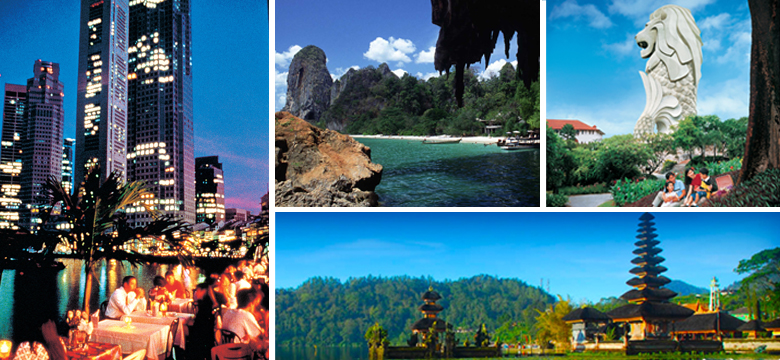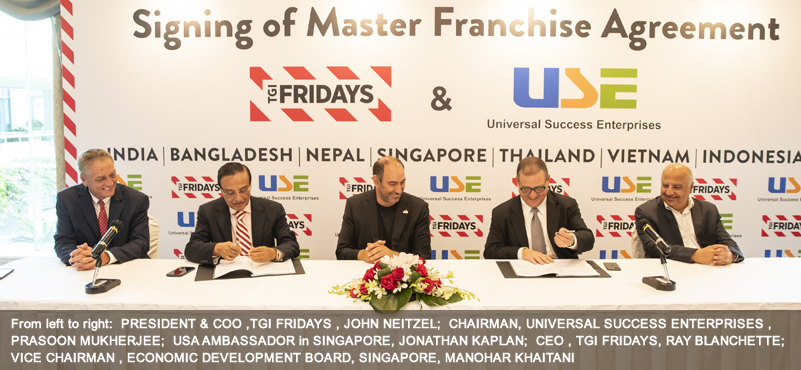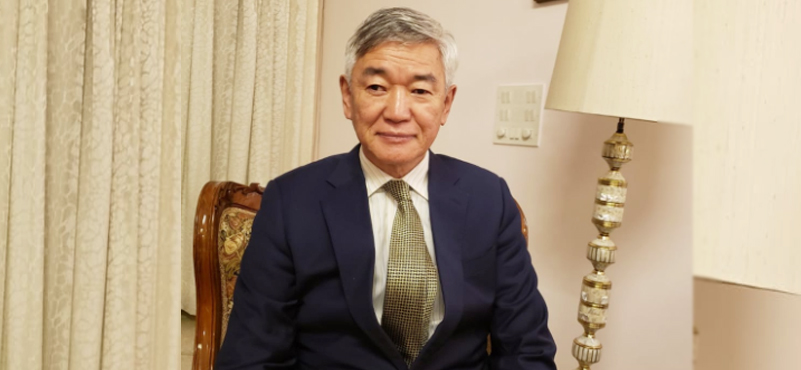The Indian outbound has taken a liking to ASEAN nations. Direct and substantial air-connectivity, and growing numbers of first-time travellers, choosing to sample offerings closer home, have supplemented the efforts put in by tourist boards in adding to Indian footfalls. The cumulative impact has been a spectacular growth in the Indian traffic to these nations. We speak to the representatives of Indonesia, Singapore, and Thailand for a comprehensive overview on tourism trends in the region.

RD, South Asia and Middle-east, Singapore Tourism Board
How has the Indian traffic moved to your country in the past five years, in tourism numbers and spends?
Sanjay Sondhi: There has been a consistent growth in numbers and we have achieved a double-digit growth (more than doubled in past 5 years)
Isra Stapanaseth: Thailand continues to be a very popular destination for Indian travelers and ranks number 6 in overall travelers to Thailand. In 2017 Thailand welcomed 1.41 million Indian tourists which was almost a 17% increase from last year. In 2018 from Jan-June, Thailand welcomed 0.79 million Indian visitors.
India is among the top 10 markets for tourism receipts to Thailand. The revenue and spends from Indian tourist especially those looking for luxury holidays and products is on the rise. Not only are Indians high spenders but are also looking at Thailand for big fat Indian weddings, celebrations, film shoots, MICE that generate high revenue. Thailand is no. 1 destination for Indian weddings. Each year around 400 Indian weddings are held in Thailand.
G.B Srithar: We have been actively promoting Singapore in India over the past couple of decades. Our continuing efforts to engage travel audiences across cities and demographics have resulted in the destination becoming one of the most popular among Indian outbound travellers. We are fortunate to have witnessed year-on-year growth in tourist arrivals in the past few years. India has become an important source market for us. In the last three years, we witnessed more than 1 million visitors from India each year.
In 2017, India moved up from fourth to third place as a source market for us and registered the highest growth rate of 16 percent among all other source markets. 2018 has been off to a good start as well; we have received more than 6 lakh visitors from India in the first five months, registering a 17 percent growth over the January to May period.
India continues to be the top source market for VA (Visitor Arrival) in the cruise segment. In 2017, 127000 cruise passengers from India sailed out of Singapore’s shores with a year-on-year increase of 25 percent from 2016.

President, OM Tourism (Rep: Indonesia)
In terms of footfalls, could you share with us specific numbers from each of the four regions of India, namely East, West, North and South?
Sanjay Sondhi: The ministry may not have the exact numbers region wise, but it is an assessment that Mumbai and Delhi (west and north India) contribute about 55% of the total numbers. The rest of India contributes around 45%.
Isra Stapanaseth: We do not have region wise figures.
Countries are now increasingly beginning to focus on tier-2 and tier-3 markets. Some of the markets have mounted as many as 18-20 cities roadshows. What is your understanding of the secondary and tertiary markets in India? How is that growing for you itself and in comparison to the main metro cities of India – Delhi, Mumbai, Kolkata, Bengaluru and Chennai etc?
Sanjay Sondhi: We as an organisation were amongst the first one to tap into the tier II and III markets way back in 2013-14 and covered 23 Indian cities. The response (from those markets) has been very positive. Trade partners now have access to information and updates about the destination and the confidence to propose itineraries to their clients. We have seen a good growth from tier II & III cities from southern India.

Director, Tourism Authority of Thailand
Isra Stapanaseth: Tier-2 and tier-3 cities in India are growing at a rapid pace in terms of outbound travelers to Thailand. Many wedding celebrations and luxury travelers to Thailand are coming from these cities. TAT is promoting new destinations and products in Thailand to agents and tour operators in tier 2 & tier 3 cities through presentations and familiarization trips. We also organize Road Shows in tier II & tier III cities.
TATs new marketing campaign is to encourage the first time travelers to visit Thailand and have the first stamp on their passport as the Thai visa. For this, TAT will increase its focus on the people in the tier-2 and tier-3 cities.
G.B Srithar: According to a report by Travkart.com, almost 40 percent of outbound travel happens from the tier-2 and tier-3 cities in India. Singapore is one of those destinations that the Indian travelers look out for. Travel service provider Thomas Cook (India) states that for travellers from tier-2 and tier-3 cities, value for money and “brag-worthy” travel experiences are most important. Cities like Jaipur, Ahmedabad, Ludhiana, Jalandhar, and Amritsar are emerging as important source markets for outbound travel.
Singapore is a destination which offers varied experiences to travellers across age groups and Singapore is among the top consideration as a family-friendly destination due to easier access and a wide range of offerings. In the last few years, we have experienced increased traffic from secondary cities due to improved connectivity. Various airlines including the Singapore Airlines, SilkAir, Jet Airways, Indigo and Air India Express fly directly to Singapore from fifteen cities. As of June 2018, there are about 265 weekly flights connecting these Indian cities directly with Singapore. There were 219,000 travellers from secondary cities in 2017 to Singapore, a growth of 17 percent as compared to 2016.
The growth in travel form secondary cities could be attributed to the various efforts that the Singapore Tourism Board has taken in the Indian market such as roadshows in tier 2 cities, travel trade and non-trade marketing partnerships (Paytm, Thomas Cook India, SOTC, Make My Trip, Travel Tours, and Cox & Kings), movie association (Badrinath Ki Dulhania – a movie where protagonists hailed from tier-2 cities) and media outreach programs.
We just concluded successfully an eight-city travel trade roadshow, together with close to 40 Singapore travel stakeholders. The cities were Trichy, Coimbatore, Kochi, Vizag, Surat, Ludhiana, Lucknow and Kolkata. All the roadshows were well attended by the local travel trade. Themed “With Passion, Forging New Possibilities”, these roadshows allowed STB and Singapore tourism stakeholders to deepen our partnerships with the in-market travel trade and share with them latest tourism products and experiences.
Where does India stand in the pecking order? What value do Indian tourists enjoy? What percentage does it generate in terms of numbers and revenue for your country? What is the trend therein?
Sanjay Sondhi: In terms of arrivals, India is in the seventh position in terms of arrivals to Indonesia. Indonesia is a value for money destination, in terms of accommodation, food and transportation etc. Indian travellers are very well respected as Indonesia has strong cultural relations with India.
In 2017, Indian arrivals contributed about 3.5 percent of total international arrivals and 4 percent for revenue. We are targeting to reach 4 percent of total arrivals in 2018.
Isra Stapanaseth: India stands at sixth spot for outbound tourist to Thailand. For Indians, Thailand is the most popular and preferred destination when it comes to planning a holiday which makes Thailand the number one destination for Indian travelers. Some of the USP of Thailand especially with the Indian travelers are proximity to India, visa on arrival facility, warm Thai hospitality, beautiful beaches, value for money destination, world-class hotels, availability of Indian and vegetarian food, even halal food, a variety of shopping options at great prices, and (being) a perfect destination for all celebrations including weddings. Thailand has something to offer for every kind of traveler and on any budget.
G.B Srithar: India has been a major source market for Singapore. Last year, India for the first time moved up from fourth to third place in terms of Visitors Arrival to Singapore with 1.27 million visitors.
We continue to promote and upgrade our existing tourism offerings for our visitors. Indian travellers are becoming more experiential, technologically-savvy and consequently more discerning. Whether one is an explorer, foodie or a collector, Singapore has a wide range of options all within easy reach. We encourage our Indian travellers to explore Singapore’s bustling retail, dining and nightlife options, embark on guided tours of our vibrant precincts, celebrate with their families on a cruise, among others.
If one looks at it geographically, we have witnessed a tremendous growth potential from secondary cities in India. We have also observed an increase in visitors with a higher propensity to spend in Singapore. They prefer to stay in good hotels, sample culinary delights and indulge in bespoke experiences.
Where do you see the limiting factor in driving more footfalls? Do you see, for instance, seamless connectivity an area of concern? Are visa and exchange regulations, or even perception, issues? To your understanding, what are some bottlenecks?
Sanjay Sondhi: Lack of direct flights from key Indian cities is our current challenge even though Garuda Indonesia is flying direct between Mumbai and Denpasar (the capital city and the main hub of the Indonesian province of Bali). Free of cost visa on arrival is a big benefit for Indian travellers, especially last-minute travel planners.
The ministry, at their level, is engaging potential airline partners for starting direct flights. The dialogue is continuing at the ministry level.
Isra Stapanaseth: The limiting factor for us is that we do not have direct flights out of India to the beach destinations such as Phuket, Samui, Krabi etc. There are a lot of Indians who prefer to fly directly to the beach destinations. Since Thailand is a short haul destination for the Indians, a long weekend with visa on arrival facility does attract Indian travelers to Thailand. Direct flights to the beach destinations would definitely increase the footfalls.
G.B Srithar: Singapore is well connected, with 265+ weekly, direct flights from 15 cities in India. The visa application process is streamlined to offer a hassle-free experience to our Indian travelers.
Singapore can be a great long-weekend destination for quick getaways and can be experienced on different travel budgets. To drive home this point, we have undertaken several marketing initiatives including brand partnerships, co-branded promotions, and Bollywood movie associations. Travelers can opt for the Singapore Tourist Pass for a variety of experiences during a one, two, or three-day stay. Singapore is also home to a dynamic culinary landscape which comprises food court, restaurants, and hawker centres. Indian travelers can revel in art displays, public/street performances along the riverfront, esplanade, and city center, particularly during weekends.
For 2018, our theme is ‘With Passion, Forging New Possibilities’. We seek to deepen and expand our partnerships across India, effectively promote our new brand “Passion Made Possible” and continue to present Singapore’s diverse offerings to the audience segments like families, working millennials, cruise and incentive travellers. While we continue to entice more visitors from key metro cities, we also aim to attract more travellers from secondary cities in terms of our visitor arrivals to Singapore and indulge in their passions.




































